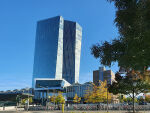
Alternative scenario: Higher interest rates are slowing inflation and economic growth in Finland
In Finland, variable rate mortgages are common, which to some extent is amplifying the impacts of monetary policy on economic growth and inflation. A key factor is the extent to which households have a financial margin to use as a buffer against increases in their loan servicing costs.











